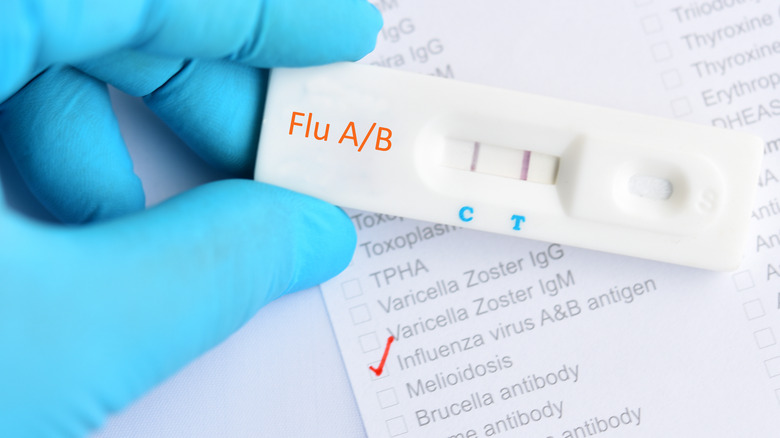Why Can't You Get An At-Home Flu Test In The US?
An estimated 8% of the U.S. population contracts the flu each year, with that number rising as high as 11% depending on the flu season, according to a 2018 study published in Clinical Infectious Diseases. This season alone has seen, as per the Centers for Disease Control and Prevention (CDC), 24 million cases, 260,000 hospitalizations, and 16,000 flu-related deaths.
As the season escalates, many people wonder why there isn't a convenient home test for influenza the way there is for COVID-19 (via Stat). Having a test that people could take at home could bring better information to their doctors and help them make more informed and timelier decisions when it comes to treatment. Tamiflu, for example, needs to be prescribed within two days of the onset of symptoms. With an at-home flu test, it would be much easier for a patient to know when they had the flu and get that prescription as quickly as possible. However, there are reasons most people don't have them.
Flu tests at home will cost you
In Europe, patients have access to an at-home test that retails for around $7 and can inspect for the flu, COVID, and respiratory syncytial virus, also known as RSV (via WebMD). However, in the U.S., it is not currently a common option for people to purchase an at-home flu test. In other words, people can order the Pixel test, but it can cost nearly $170 and requires the results to be sent via FedEx.
Unfortunately, the delay in getting regularly-available at-home flu tests is largely due to the Food and Drug Administration's historically slow approval process for over-the-counter tests (per Stat). For example, it took them 10 years to approve at-home pregnancy tests. On the other hand, flu tests are expensive and have a limited shelf life, making it difficult for pharmacies to stock them long-term, according to Mercy Medical Center. There is also the perception, explains the University of South Florida, that the flu is not as serious a virus as something like COVID so the demand is not as high for readily-available tests. However, with the rise in both popularity and demand of at-home COVID tests, there is the sense that the tide is turning and that, within a few years, flu tests may find their way into medicine cabinets across the U.S.


